What is an Arborist?
An Arborist is a person who works with trees – normally a tree surgeon or someone who carries out practical work, such as planting, pruning, training etc. Sometimes this term can be used to describe all individuals who work with trees grown for amenity purposes.
To find out more about the work of an arboricultural contractor, see our other advice pages below.
What is a Tree Consultant?
A tree (arboricultural) consultant is someone who has gained recognised qualifications and expertise in the care and management of trees.
Their role involves providing technical and professional tree care advice to a range of Clients. Including development design advice, tree risk management, management of tree populations, statutory protection assistance, property damage enquiries and supervising construction works.
Responsibilities
Examples of some of the typical day to day work of an arboricultural consultant include...
- Undertaking tree surveys, providing Arboricultural Impact Assessments (AIA), Arboricultural Method Statements (AMS) and Arboricultural Clerk of Works (ACoW) for development (BS5837:2012)
- Undertaking tree surveys, reporting, developing tree risk management policies for tree risk management
- Undertaking tree surveys, providing management plans, for tree collection management
- Assisting clients with Statutory Protection (Tree Preservation Orders) and Conservation Area) projects
- Assisting clients with property damage enquiries (subsidence)
- Providing written and verbal advice to Clients
Registered Consultants
The Arboricultural Association operates a directory of Registered Consultants. Members of the scheme have attained a recognised standard of knowledge and experience, and have demonstrated the ability to practise as an arboricultural consultant in the most complex and demanding situations.
The aim of the scheme is to recognise excellence in the field of tree consultancy, and it is promoted by the Arboricultural Association as establishing the highest level of attainment available within the UK.
You can search the directory by postcode or name
Why should I use an ARB Approved Contractor?
Contractors listed in our directory listing have submitted their businesses and their tree work to the Arboricultural Association for assessment and have been found competent to provide arboricultural contracting services to clients.
The Arboricultural Association’s assessment of Approved Contractors is not limited to their knowledge of trees and tree maintenance but also:
- Their understanding and practical application of current arboricultural practice
- Their compliance with legislative requirements of arboricultural contracting
- Their compliance with health and safety requirements of arboricultural contracting (endorsed by the CHAS scheme)
- Their high levels of service to clients through efficient business management.
Each Arboricultural Association Approved Contractor is required to identify a principal or manager who is responsible to the Association for the company’s standards. The standard required by the Association is very high and Approved Contractors are subject to reassessments at regular intervals to ensure that standards are maintained. The standards themselves are regularly reviewed to ensure that they reflect contemporary arboricultural research findings, legislative and health and safety requirements, business practices and customer expectations.
The Association requires that Approved Contractors within this directory must hold insurances to levels appropriate to liabilities that their work may generate, and in all cases Public Liability insurance to a minimum of £5,000,000 with a maximum excess of £250 in any one incident. Employers’ Liability insurance (as applicable) to an appropriate level commensurate with the size of the business is needed. Professional Indemnity insurance, to a minimum of £500,000, may also be required if the contractor provides independent written advice.
Inclusion of a contractor within this directory should not be regarded as proof of current insurance cover. Before entering into any contractural agreement clients should satisfy themselves that appropriate insurance is in place by asking for evidence from the contractor and/or their broker.
What are the typical services of an arboricultural contractor?
Services typically required of an arboricultural contractor are:
- Tree maintenance operations including pruning, and related works to relevant British Standards (see our Tree Work Terminology page)
- Tree planting operations and aftercare/establishment programmes
- Tree felling, including dismantling of dangerous trees or trees in confined spaces
- Advice and guidance on the above.
In addition some contractors may undertake pest and disease (‘P&D’) identification and control, bracing, soil decompaction and amelioration, tree fertilisation, mulching and other operations, including hedge trimming, fruit tree pruning, veteran tree management. However, only those listed above are covered by the ‘ARB Approved Contractor Scheme’
These services are usually performed to an agreed specification which may come from:
- The contractor after discussion with the client, or
- A third party such as a Consultant employed, or
- The Local Authority Tree Officer if a Tree Preservation Order etc. is in place.
In either case it is prudent for clients to obtain a written specification for the work and to agree the specification and price prior to commissioning the contractor.
Further information:
The Arboricultural Association's official guide to choosing your tree surgeon
How do I select the right Tree Surgeon?
First, refer to the Arboricultural Association's official guide to choosing your tree surgeon
- When making an appointment with an ARB Approved Contractor clients should advise the contractor whether advice on trees is required, or if a specification for works already exists against which the contractor’s quotation is sought
- Clients are advised to obtain more than one estimate or quotation for the purpose of comparison, but should remember that price is only one factor in selecting a service provider
- Estimates or quotations will normally be provided free of charge when quoting against a specification, however, a fee may be charged if advisory work is involved. Clients are advised to be clear with the contractor from the outset
- When asking for an estimate or quotation indicate when you would like the work undertaken. The contractor will advise whether or not this is practical or possible
- Respond to estimates or quotations quickly – try to advise the contractor within 7-10 days whether or not you wish them to undertake the work and make clear the terms of acceptance
- Ensure issues of tree protection legislation including TPO’s/Conservation Area or other restrictions, i.e. covenants/third party trees are consented/resolved prior to commissioning works
The directory lists Arboricultural Association ARB Approved Contractors throughout the UK which can be searched directly by name or simply by postcode and distance. However, remember that some contractors will operate throughout the UK and even abroad.
In the unlikely event that clients are not satisfied with services from an ARB Approved Contractor a complaints procedure may be followed.
Whist the Arboricultural Association makes every effort to ascertain the competence of ARB Approved Contractors it cannot accept liability in respect of any persons or companies named in the directory. The Arboricultural Association cannot be held responsible for the advice or actions of any persons or companies listed in our directories.
A brief guide to legislation for trees
The following advice applies to England only and is for guidance purposes only. Some trees are protected by legislation, and it is essential that you establish the legal status of trees prior to carrying out works to them. Unauthorised work to protected trees could lead to prosecution, resulting in enforcement action such as fines or a criminal record. Tree Preservation Orders, Conservation Areas, Planning Conditions, Felling Licences or Restrictive Covenants legally protect many trees in the UK.
Tree Preservation Orders (TPOs)
TPOs are administered by Local Planning Authorities (LPA) (e.g. a borough, district or unitary council or a national park authority) and are made to protect trees that bring significant amenity benefit to the local area. This protection is particularly important where trees are under threat.
All types of tree, but not hedges, bushes or shrubs, can be protected, and a TPO can protect anything from a single tree to all trees within a defined area or woodland. Any species can be protected, but no species is automatically protected by a Tree Preservation Order.
A TPO is a written order which, in general, makes it a criminal offence to cut down, top, lop, uproot, wilfully damage or wilfully destroy a tree protected by that order, or to cause or permit such actions, without the authority’s permission. Anyone found guilty of such an offence is liable. In serious cases the case may be dealt with in the Crown Court where an unlimited fine can be imposed.
To make an application to carry out tree works you will need to complete an application form and submit it to the LPA. The form can either be submitted through the Planning Portal or directly to the
LPA. You can find out more about TPOs in the Department for Communities and Local Government guide titled Protected trees: A guide to tree preservation procedures (withdrawn 7 March 2014) and it’s replacement The National Planning Policy Framework and relevant planning practice guidance document with particular reference to Tree Preservation Orders and trees in conservation areas. You might also find it helpful to seek the advice of a tree surgeon prior to making an application. A directory of Arboricultural Association Approved Contractors can be found here.
Conservation Areas
Normal TPO procedures apply if a tree in a conservation area is already protected by a TPO. But if a tree in a conservation area is not covered by a TPO, you have to give written notice to the LPA (by letter, email or on the LPA’s form) of any proposed work, describing what you want to do, at least six weeks before the work starts. This is called a ‘section 211 notice’ and it gives the LPA an opportunity to consider protecting the tree with a TPO.
You do not need to give notice of work on a tree in a conservation area less than 7.5 centimetres in diameter, measured 1.5 metres above the ground (or 10 centimetres if thinning to help the growth of other trees).
You can find out more about trees in Conservation Areas in the Department for Communities and Local Government guide titled Protected trees: A guide to tree preservation procedures (withdrawn 7 March 2014) and it’s replacement The National Planning Policy Framework and relevant planning practice guidance document with particular reference to Tree Preservation Orders and trees in conservation areas.
Trees and the planning system
Under the UK planning system, LPAs have a statutory duty to consider the protection and planting of trees when granting planning permission for proposed development. The potential effect of development on trees, whether statutorily protected (e.g. by a tree preservation order or by their inclusion within a conservation area) or not, is a material consideration that is taken into account when dealing with planning applications. Where trees are statutorily protected, it is important to contact the LPA and follow the appropriate procedures before undertaking any works that might affect the protected trees.
Planning conditions are frequently used by LPAs as a means of securing the retention of trees, hedgerows and other soft landscaping on sites during development and for a period following completion of the development. If it is proposed to retain trees for the long term then a TPO is often used rather than a planning condition. If valid planning conditions are in place then anyone wishing to undertake work to trees shown as part of the planning condition must ensure they liaise with the LPA and obtain any necessary consent or variation.
The nature and level of detail of information required to enable an LPA to properly consider the implications and effects of development proposals varies between stages and in relation to what is proposed. Table B.1 of British Standard BS 5837:2012 Trees in relation to design, demolition and construction – Recommendations provides advice to both developers and LPAs on an appropriate amount of information that will need to be provided either at the planning application stage or via conditions.
For further information you are advised to contact either your LPA or to seek advice from an Arboricultural Association Registered Consultant from the list which can be found here.
Felling Licences
Felling Licences are administered by the Forestry Commission. You do not need a licence to fell trees in gardens. However, for trees outside gardens, you may need to apply to the Forestry Commission for a felling licence, whether or not they are covered by a TPO. You can find out more about felling licences at Felling Licences quick guide (England) or in the Forestry Commission’s booklet Tree Felling – getting permission.
Sites of Special Scientific Interest (SSSI)
SSSIs (ASSIs in Northern Ireland) are designated by the Statutory Nature Conservation Organisation (SNCO) for each country of the United Kingdom. They include some of our most spectacular and beautiful habitats - large wetlands teeming with waders and waterfowl, winding chalk rivers, gorse and heather-clad heathlands, flower-rich meadows, windswept shingle beaches and remote uplands moorland and peat bog. Each SSSI will have a management plan and a list of operations requiring the SNCOs consent prior to carrying out works.
Any activity that recklessly or intentionally harms the SSSI (ASSIs in Northern Ireland) or its flora or fauna will be an offence liable on summary conviction to a fine not exceeding £20,000 or on conviction on indictment to an unlimited fine. If you know the name of the Site of Special Scientific Interest and want to know more about it, you can search for it by country at England, Wales, Scotland or Northern Ireland.
Restrictive Covenants
A restrictive covenant is a promise by one person to another, (such as a buyer of land and a seller) not to do certain things with the land or property. It binds the land and not an individual owner, it "runs with the land". This means that the restrictive covenant continues over the land or property even when the current owner(s) sells it to another person. Restrictive covenants continue to have effect even though they may have been made many years ago and appear to be obsolete.
Covenants or other restrictions in the title of a property or conditions in a lease may require the consent of a third party prior to carrying out some sorts of tree work, including removing trees and hedges. This may be the case even if TPO, CA and felling licence regulations do not apply. It may be advisable to consult a solicitor.
Further information
Further information about TPO legislation can be found in the latest National Planning Policy Framework with particular reference to Tree Preservation Orders and trees in conservation areas.
More detailed information on TPOs: www.gov.uk/guidance/tree-preservation-orders-and-trees-in-conservation-areas#Flowchart-1-Making-and-confirming-TPO
Services typically required of an arboricultural contractor are:
- Tree maintenance operations including pruning, and related works to relevant British Standards (see our Tree Work Terminology page)
- Tree planting operations and aftercare/establishment programmes
- Tree felling, including dismantling of dangerous trees or trees in confined spaces
- Advice and guidance on the above.
In addition some contractors may undertake pest and disease (‘P&D’) identification and control, bracing, soil decompaction and amelioration, tree fertilisation, mulching and other operations, including hedge trimming, fruit tree pruning, veteran tree management. However, only those listed above are covered by the ‘ARB Approved Contractor Scheme’
These services are usually performed to an agreed specification which may come from:
- The contractor after discussion with the client, or
- A third party such as a Consultant employed, or
- The Local Authority Tree Officer if a Tree Preservation Order etc. is in place.
In either case it is prudent for clients to obtain a written specification for the work and to agree the specification and price prior to commissioning the contractor.
Below is a list of qualification and post nominals for arboriculture and related areas.
If you need guidance on careers then click here or if you want a list of education establishments that offer arboricultural courses or training click here
| AIEMA |
|---|
|
Associate Member of the Institute of Environmental Management and Assessment |
| HND Hort |
|---|
|
Higher National Diploma in Horticulture |
| AMInst LM |
|---|
|
Associate Member of the Institute of Leadership and Management |
| ISA Cert Arb |
|---|
|
Certificate in Arboriculture International Society of Arboriculture |
| BA (Cantab) |
|---|
|
Bachelor of Arts degree Cambridge University |
| LCGI(Hort) |
|---|
|
Licentiate of City & Guilds Institute (Horticulture) |
| BA (Hons) |
|---|
|
Bachelor of Arts (with Honours) |
| MA |
|---|
|
Master of Arts |
| BCMA |
|---|
|
Board – Certified Master Arborist |
| MAE |
|---|
|
Master of the Academy of Experts |
| BSc |
|---|
|
Bachelor of Science |
| MArb (RFS) |
|---|
|
Master in Arboriculture Royal Forestry Society |
| BSc (Hons) |
|---|
|
Bachelor of Science (with Honours) |
| MArborA |
|---|
|
Professional Member of the Arboricultural Association |
| CBiol |
|---|
|
Chartered Biologist |
| MBE |
|---|
|
Member of the Order of the British Empire |
| CEnv |
|---|
|
Chartered Environmentalist |
| MBS |
|---|
|
Master of Business Studies |
| CUEW |
|---|
|
Cardiff University Expert Witness |
| MCIEA |
|---|
|
Member of Chartered Institute Educational Assessors |
| Cert Arb L2 (ABC) |
|---|
|
Level 2 Certificate in Arboriculture |
| MEWI |
|---|
|
Member of the Expert Witness Institution |
| Cert Arb L4 (ABC) |
|---|
|
Level 4 Certificate in Arboriculture |
| MICFor |
|---|
|
Member of the Institute of Chartered Foresters |
| Cert Arb L6 (ABC) |
|---|
|
Level 6 Certificate in Arboriculture |
| MIEEM |
|---|
|
Member of the Institute of Ecology and Environmental Management |
| Cert Ed |
|---|
|
Certificate of Education |
| M Hort |
|---|
|
Master of Horticulture |
| DMS |
|---|
|
Diploma in Management Studies |
| Mlf L |
|---|
|
Member of the Institute for Learning |
| DPhil |
|---|
|
Doctor of Philosophy |
| MI Hort |
|---|
|
Member of the Institute of Horticulture |
| Dip Arb L4 (ABC) |
|---|
|
Level 4 Diploma in Arboriculture |
| MPhil |
|---|
|
Master of Philosophy |
| Dip Arb L6 (ABC) |
|---|
|
Level 6 Diploma in Arboriculture |
| MRICS |
|---|
|
Member of the Royal Institution of Chartered Surveyors |
| Dip Hort |
|---|
|
Diploma in Horticulture |
| MSB |
|---|
|
Member of the Society of Biology |
| Dip LA |
|---|
|
Diploma in Landscape Architecture |
| MSc |
|---|
|
Master of Science |
| Dip LD |
|---|
|
Diploma in Land Design |
| NCH Arb |
|---|
|
National Certificate in Horticulture (Arboriculture) |
| FArborA |
|---|
|
Fellow of the Arboriculural Association |
| ND Arb |
|---|
|
National Diploma in Arboriculture |
| FdSc (Arb) |
|---|
|
Foundation Degree in Science |
| ND Hort/Arb |
|---|
|
National Diploma in Horticulture/Arboriculture |
| FICFor |
|---|
|
Fellow of the Institute of Chartered Foresters |
| NDF |
|---|
|
National Diploma in Forestry |
| FIOG |
|---|
|
Fellow of the Institute of Groundsmanship |
| OBE |
|---|
|
Officer of the Order of the British Empire |
| FLS |
|---|
|
Fellow of the Linnean Society |
| PDArb (RFS) |
|---|
|
Now Cert Arb L6 (ABC) and Dip Arb L6 (ABC) |
| FRES |
|---|
|
Fellow of the Royal Entomological Society |
| PhD |
|---|
|
Doctor of Philosophy |
| FRICS |
|---|
|
Royal Institute of Chartered Surveyors |
| Tech Cert (ArborA) |
|---|
|
Now Cert Arb L4 (ABC) and Dip Arb L4 (ABC) |
| FRSA |
|---|
|
Fellow of the Royal Society of Arts |
| TechArborA |
|---|
|
Technician Member of the Arboricultural Association |
| HNC Arb |
|---|
|
Higher National Certificate in Arboriculture |
| WDH |
|---|
|
Wisley Diploma in Horticulture |
| HND Arb |
|---|
|
Higher National Diploma in Arboriculture |
Choosing your Tree Surgeon
(Arborist)
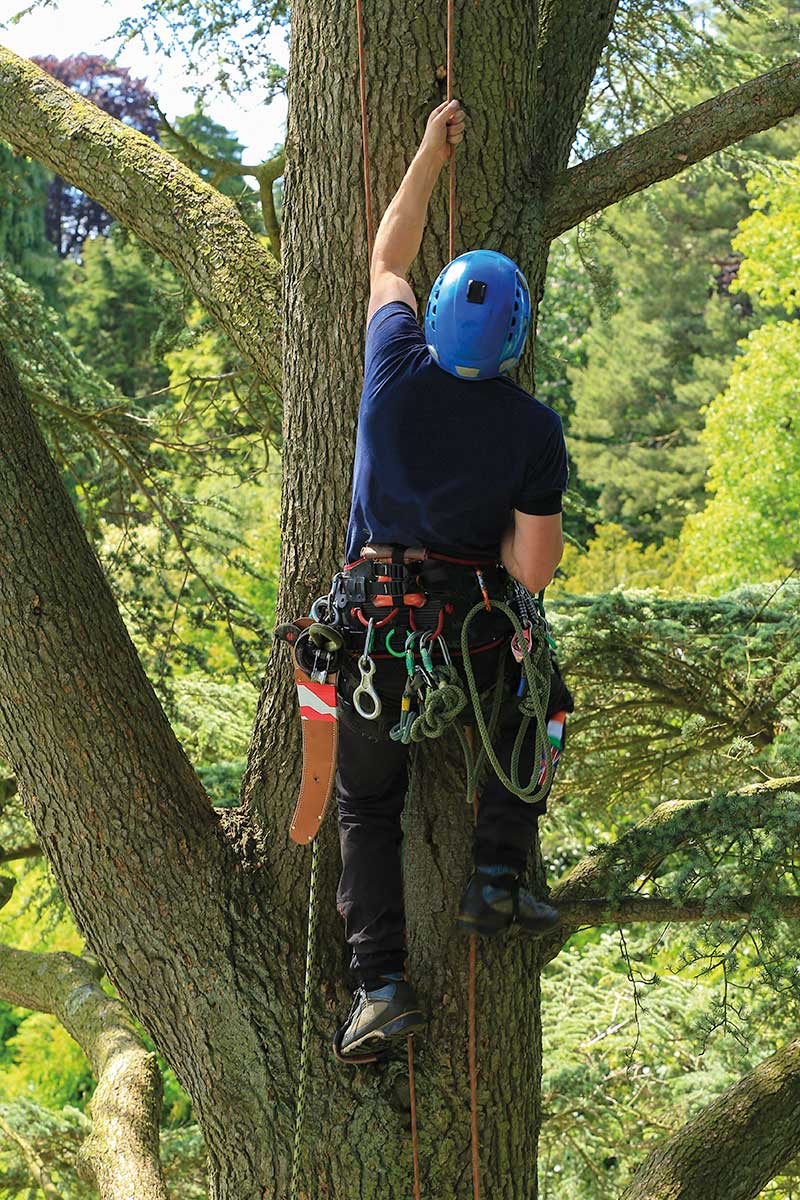
Good Climbing Practice
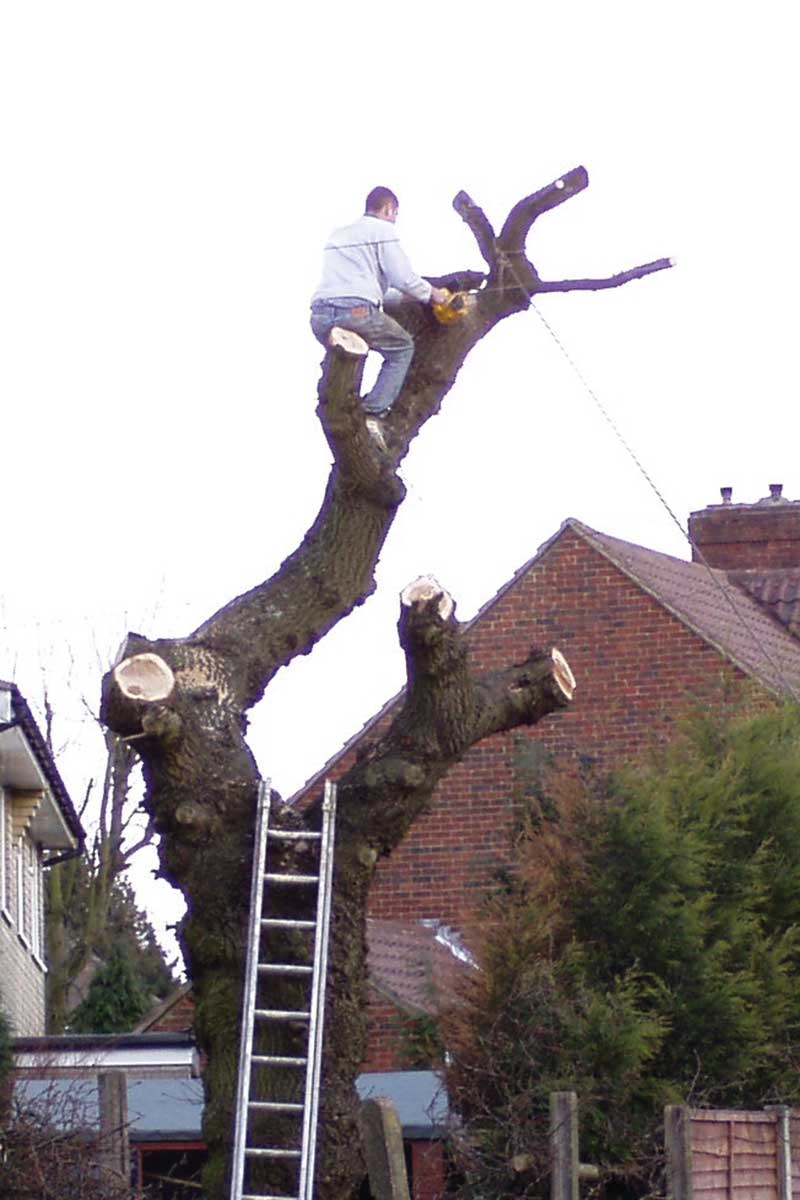
Bad Climbing Practice
If tree work is not done properly it could lead to:
- INJURY to people*
- DAMAGE to property*
- SERIOUS HARM to your trees that have taken many years to grow…
All through ill-advised and badly executed tree work.
*Potentially you may be liable is a 3rd party is affected.
Questions you should ask an arborist
Stage 1
Ask for a quote**
(a reputable arborist will always give a positive response)
- Are you insured?
If YES. please show evidence of insurance – Employers’ Liability & Public Liability (recommended minimum of £5 million). - Do you work to a British Standard?
If YES, which one?
Should be BS3998: 2010 ‘Tree Work – Recommendations’. - What qualifications do you and your staff hold? (ask to see copies)
Compulsory: MIUST have NPTC/Lantra Awards*** certificates for chainsaw use.
Recommended: Certificates for other skills and machines. Arboricultural knowledge e.g. National Certificates and Diplomas in Arboriculture. - Will you provide a written quotation?
If NO, reject the contractor. - Are you a member of a professional organisation?
Membership does not guarantee work standards but does show a degree of commitment. - Can you provide me with the phone number of a referee who can show me some of your work?
If YES, follow up the reference.
**Obtain more than one quote, ideally 3.
***NPTC and Lantra Awards are national organisations that assess competence of people using chainsaws and other arboricultural equipment. Competent arborists will be able to show you an A4 sized certificate or plastic ID card if requested.
Tree work operations (arboriculture) require a high degree of technical competence, supported by training and experience. For these reasons tree work should only be undertaken by well-trained, competent arborists experience at the type of work being undertaken, e.g. tree pruning/tree removal.
Stage 2
Choosing the quote that suits you
When you receive your quotations check they include the following before deciding which one to accept:
- Reference to BS3998: 2010 ‘Tree Work – Recommendations’
- Clear and full details of the work to be undertaken (the specification).
- What will happen to the timber and brushwood?
- What will happen with the tree stumps?
- Whether VAT is included.
- Who will be responsible for obtaining permission if the trees are protected?
- What steps will be taken to protect you and your property (the risk assessment)?
Be aware that there may be a limited quote validity period.

Stage 3: Consumer protection
If problems arise you can get help and advice from industry bodies such as the Arboricultural Association, International Society of Arboriculture or TrustMark.
Competent arborists
In the UK there are two recognised schemes certifying the competence of arborists through examination and regular re-assessment or Continuing Professional Development (CPD).
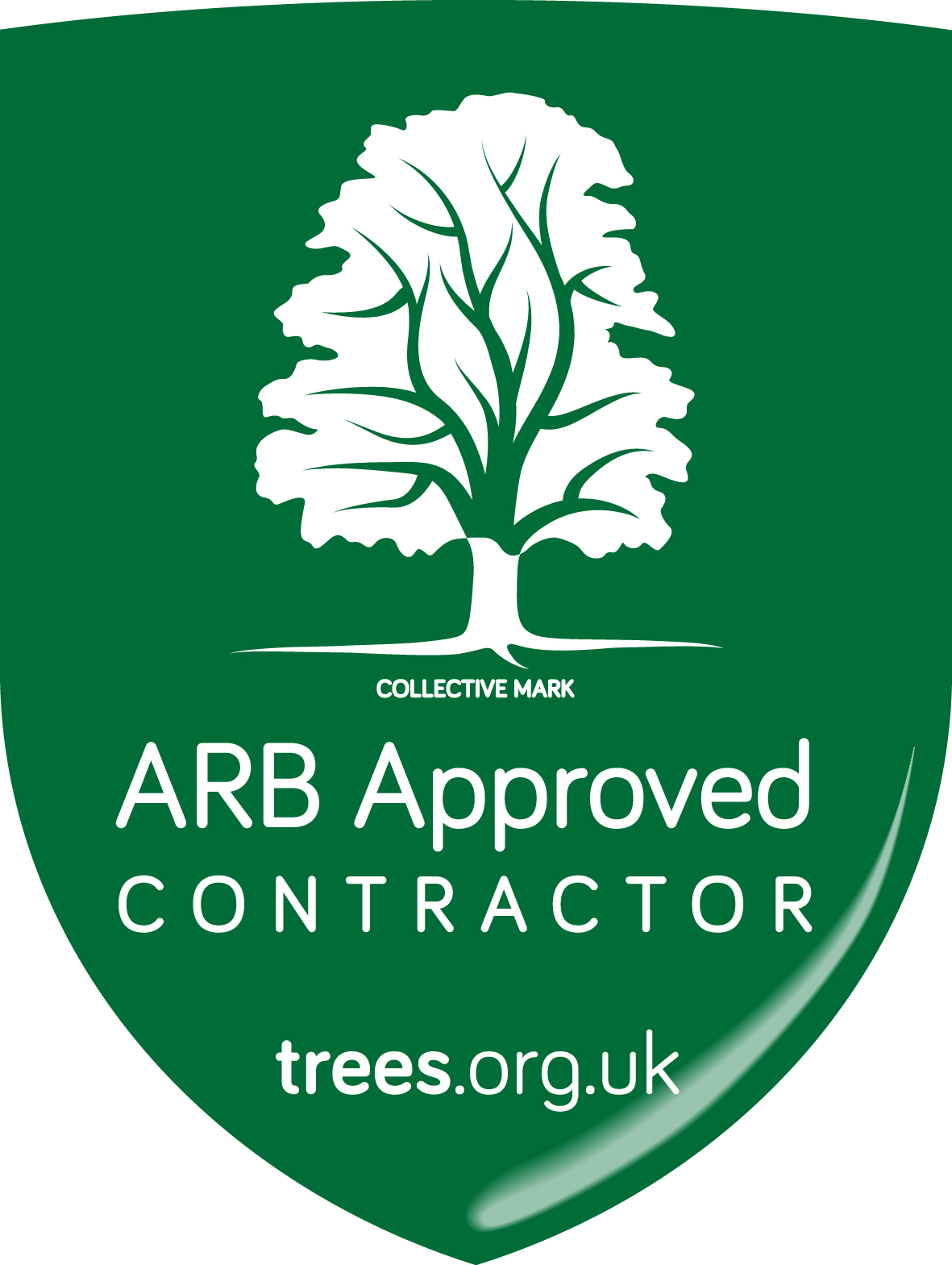
The Arboricultural Association (AA) maintains an online Directory of quality assured tree surgery businesses. they are regularly assessed for their health and safety procedures, office and business practices, including customer care, as well as their quality of tree work. they will display the AA ARB Approved Contractor logo.
Check whether the contractor’s approval is current on the Arboricultural Association website via the ‘Find a Tree Surgeon’ link.
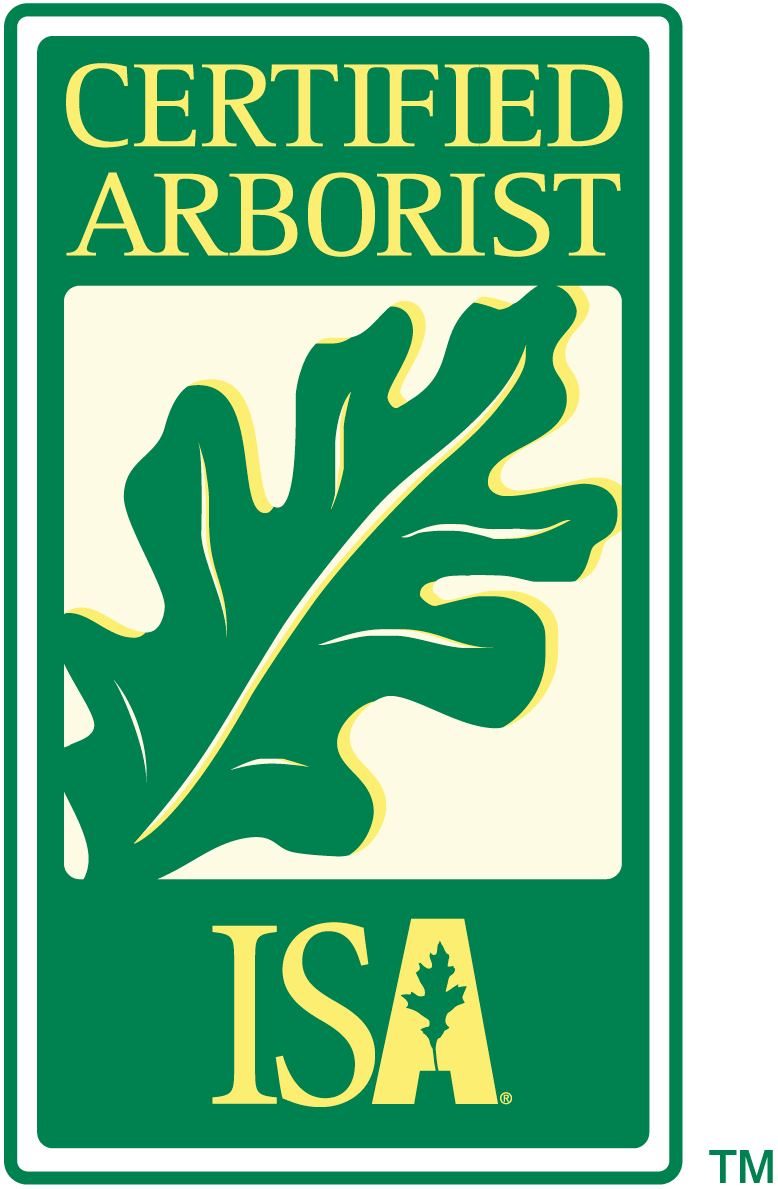
Individual arborists may be certified by the International Society or Arboriculture (ISA). The ISA assesses the individual for their knowledge and ability. Certified arborists will display the ISA Certified Arborist logo.
Please check with the Society that the arborist’s approval is current, throught the ISA website www.isa-arbor.com/.
Other arborists may be equally competent. If they do not subscribe to either of the above schemes you should take more care to follow up the advice contained in Stage 1 & 2 above.
Be SAFE, Be SURE
There is no shortage of people and companies offering tree work services, but how do you choose between them? The Health and Safety Executive says,
clients engaging contractors to undertake tree work need to carefully check they have the necessary skill and competence. Tree work is hazardous; to be done safely it requires properly trained and experienced people… Arboricultural trade associations can supply details of approved contractors and information to help you choose a competent tree work contractor…
It is equally important that advice given in respect to trees is correct and from reliable professionals. People and companies in this directory have satisfied the Arboricultural Association that they are competent to provide the consultancy and contractor services as described.
Recognising an ARB Approved Contractor
A great way to recognise a competent Tree Surgeon is to look out for the ARB Approved Contractor Shield. The shield is relatively new and chances are your local Tress Surgeon may still be displaying the old logo. Indeed, just because you see the old logo it does not mean they are not approved, just go to our directory page to check out a Tree Surgeon to give you peace-of-mind. We only show Tree Surgeons who have been approved and who have been assessed.
People at risk:
![]() No head injury protection (helmet)
No head injury protection (helmet)
![]() No eyesight protection
No eyesight protection
![]() No hearing protection
No hearing protection
![]() No fall protection (platform, rope and harness etc.)
No fall protection (platform, rope and harness etc.)
![]() No cut protection (chainsaw resistant trousers and boots)
No cut protection (chainsaw resistant trousers and boots)
Groundsman
![]() No head injury protection (helmet)
No head injury protection (helmet)
![]() No protection from traffic (high visibility clothing, road signing and traffic management)
No protection from traffic (high visibility clothing, road signing and traffic management)
Other people
![]() Pedestrians and residents at risk of being hit by timber
Pedestrians and residents at risk of being hit by timber
![]() Vehicles at risk of being hit by timber
Vehicles at risk of being hit by timber
Property
![]() Damage to fencing and other garden features
Damage to fencing and other garden features
![]() Damage to street infrastructure
Damage to street infrastructure
![]() Damage to a valuable tree
Damage to a valuable tree
You could be at risk if you employ a tree surgeon or tree advisor who works like this and causes harm, injury or loss to yourself or anyone else.
Spot the difference
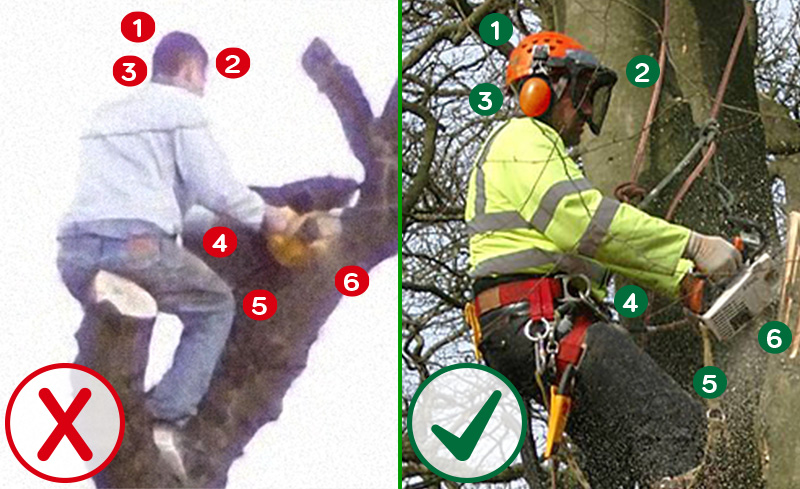
![]() No helmet
No helmet
![]() No eye protection
No eye protection
![]() No hearing protection
No hearing protection
![]() No fall protection
No fall protection
![]() No cut protection
No cut protection
![]() Outdated chainsaw
Outdated chainsaw
![]() Industrial chainsaw helmet
Industrial chainsaw helmet
![]() Full-face visor including eye protection
Full-face visor including eye protection
![]() Ear defenders for hearing protection
Ear defenders for hearing protection
![]() Rope and harness for fall protection
Rope and harness for fall protection
![]() Chainsaw trousers / boots for cut protection
Chainsaw trousers / boots for cut protection
![]() Modern chainsaw with safety features
Modern chainsaw with safety features
Choose carefully
By choosing tree surgeons from this directory you have the security of knowing that each person or company has passed the Arboricultural Association's rigorous and industry recognised standards of safety and tree care. All home/landowners have a responsibility* to engage competent people to work on their property. If you choose to use a contractor not listed in the directory the following checklist can help you establish the contractor's competence.
*Common law duty of care responsibilities and sometimes liabilities under the Occupiers' Liability Acts of 1957 & 1984.
Choose a professional
Tree Surgeon
1 When making an appointment with an ARB Approved Contractor clients should advise the contractor whether advice on trees is required, or if a specification for works already exists against which the contractor’s quotation is sought
2 Clients are advised to obtain more than one estimate or quotation for the purpose of comparison, but should remember that price is only one factor in selecting a service provider
3 Estimates or quotations will normally be provided free of charge when quoting against a specification, however, a fee may be charged if advisory work is involved. Clients are advised to be clear with the contractor from the outset
4 When asking for an estimate or quotation indicate when you would like the work undertaken. The contractor will advise whether or not this is practical or possible
5 Respond to estimates or quotations quickly – try to advise the contractor within 7-10 days whether or not you wish them to undertake the work and make clear the terms of acceptance
6 Ensure issues of tree protection legislation including TPO’s/Conservation Area or other restrictions, i.e. covenants/third party trees are consented/resolved prior to commissioning works
The directory lists Arboricultural Association ARB Approved Contractors throughout the UK which can be searched directly by name or simply by postcode and distance. However, remember that some contractors will operate throughout the UK and even abroad.
In the unlikely event that clients are not satisfied with services from an ARB Approved Contractor a complaints procedure may be followed.
Whist the Arboricultural Association makes every effort to ascertain the competence of ARB Approved Contractors it cannot accept liability in respect of any persons or companies named in the directory. The Arboricultural Association cannot be held responsible for the advice or actions of any persons or companies listed in our directories.
